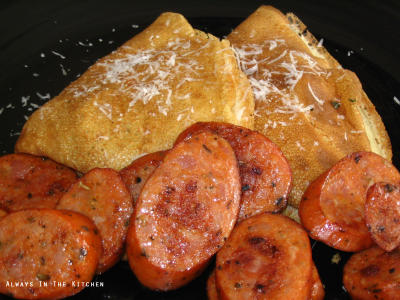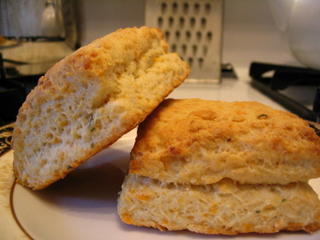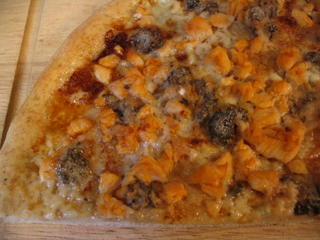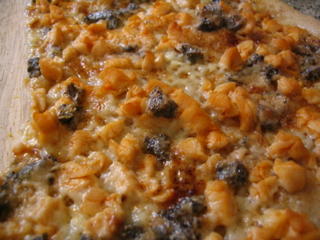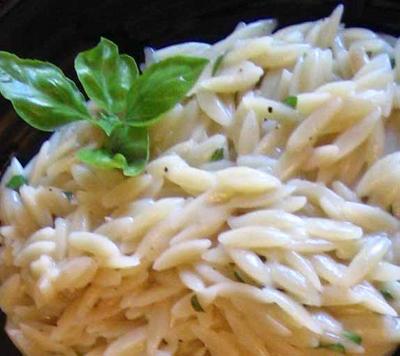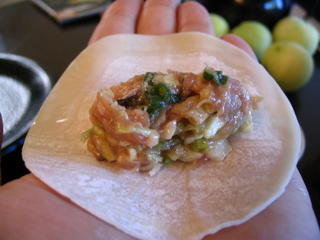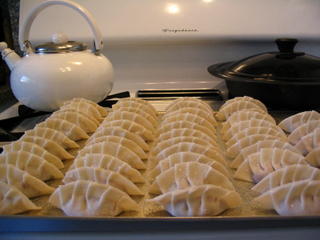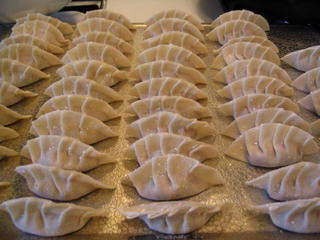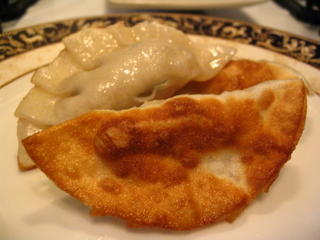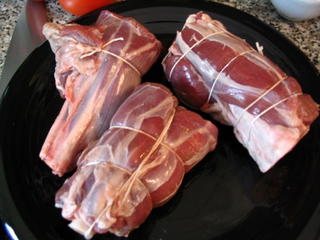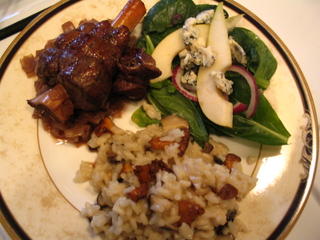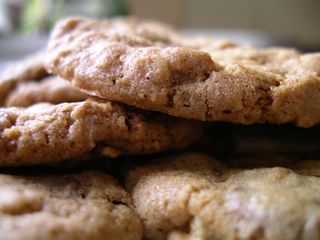I am home again, after ten days abroad in the lowlands of Scotland. We stayed primarily in Glasgow, due to our attendance at WorldCon, but managed a couple of days east in Edinburgh.
There is a sound to the city of Glasgow, and trite as it may seem, it is almost the sound of bagpipes. At night, when you've left the window open to lose the muggy air, there is a certain hum that is almost like a whispery drone of bagpipes just starting, in the background. Toward the end of our journey, it became a full on pipe sound, as the Piping Festival got underway.
I am almost at a loss about where to start, so I will start where my day usually started, with breakfast:

The Charing Cross Guest House boasted a
full, cooked Scottish breakfast included with the room cost, so it made sense to avail ourselves of it as a cost cutting measure, if nothing else. As it turns out, it wasn't bad. True, it was meat-heavy and desperately rich, so after a couple of days we took to ordering our breakfasts somewhat modified. For Palle, that meant asking them to hold the beans - somewhat anemic and tomato-y as they were - but for me it meant refraining from the Lorne sausage - a strangely rectangular patty of blended pork that came to resemble spam more and more in my mind as the days went by.
While the egg, the rasher of bacon, and the half-tomato (usually a little less than ripe) need no explanation, the Lorne sausage (in some other hotel it might be black pudding instead) and the potato scone were something of a novelty. The flat, boxty-like, fried potato bread that they rather optimistically refer to as a "scone" is actually a little on the sweet side, which can be a bit disconcerting against the richness of the meat and eggs. Breakfast was made complete by a glass of juice, some brutal coffee (served with milk, as is the fashion there, rather than cream) and copious amounts of toast and delightfully yellow, flavourful butter. Sometimes there were oatcakes, too, and there was always cold cereal available from the counter near the coffee pot.
Of course, this is not the average breakfast of your average Scotsman. Cornflakes are a more likely bet. The very idea of facing this onslaught of calories had me humming "
Scotland the Brave" under my breath on my way down the stairs each morning. It's not that it was bad - it was quite tasty. But I am not used to facing such hearty, meat-laden fare day in, day out.
I have already described the delightful dinner that we had at
The Piper's Tryst, but I failed to mention the entertainment. While we were dining in this charming little restaurant (which is attached to the Piping Hall and a hotel) there was a wedding in progress in the hall next to us. What this ultimately meant was that the groom and groomsmen, in full traditional kit (
skein dhu and all) were taking turns at the bar for a belt of whisky or two, bridesmaids in colourful satin gowns were lurching around breathlessly, and at one point the bride, all young freckled shoulders and elaborately arranged fair hair, swept through on her way to collect some of her bridal party. In all, a merry time was had by all.
Our dinner at The Piper's Tryst (the more sweetly named, for the wedding taking place) remained the culinary highlight of our trip, although there were other delights in store. It was there that Palle tried haggis - as did I - and discovered it to not be that bad, after all. My previous experience of it was ten years ago in Edinburgh, and I was decidedly unfavourably impressed at the time. This example was far superior, particularly in that the contents were much more finely chopped than my previous sample.
Over in
Edinburgh, we stayed at perhaps the most half-assed B&B ever. The people were friendly, but not terribly good at their jobs (it was primarily staffed by young people who were in residence in the ancient building themselves). The breakfast was blessedly continental, because I don't think I would have been too confident about the cooking skills of the motley lot in charge. However, it was during the Edinburgh festival, and we had little other options for available accommodation, outside venues so decidedly uppercrust that they advertised inclusive butler service. Since even the inexpensive places in Scotland were burning a fierce hole in our pockets (prices are elevated during the festival, sadly), this was clearly out of our league... this time, anyway.
We were staying in the picture-pretty suburb of Leith, right where the Water of Leith meets the Ocean, on the same block as a pub called the
King's Wark which had originally been built in the early 1400's as a seaside residence for James I, then turned variously into a plague hospital and then, in the early 1600's into a pub, which it remains to this day.
The butcher shops along the main shopping artery in Leith all had delightful displays, including the requisite haggis and Scotch brisket. The fishmongers also had lovely displays, including a lot of shellfish from the North Sea, and - oddly enough - farm fresh eggs.

I at first thought that Grampion was the breed of chicken for sale, but it turns out to be a misspelling of a UK poultry wholesaler, which is infinitely more disappointing. Grampian is also a region in Scotland, but that doesn't seem to be relevant to the chickens sold here. Shocking prices, like everything else here.
While doing the usual touristy things such as exploring the Royal Mile and touring the Edinburgh castle (questionable value, really) we planned for lunch at the renowned restaurant
The Witchery, which is right by the gates to the castle.

The room is easily as pretty a restaurant room as I have seen, but we do not have pictures, sadly. The space seems literally to have been just that - a space between two buildings that was turned into a building of its own, using the rough, exterior walls of the flanking buildings as interior walls for the restaurant. We were seated in the portion called the Secret Garden, which had elaborate frescoes on the ceiling, and Celtic knotwork painted on the beams. The tables were covered first with brown velveteen, then crisp white linen, and each table had one low candle and one high candle, giving a very romantic appearance to the room even at mid day.
We started with the Light Lunch fixed menu, each choosing the Cream of Cauliflower soup, which was velvety and flavourful, without being overly heavy, and then moving on to the blanquette de veau main portion. I couldn't resist, actually. I have such fond memories of blanquette de veau from my time in Paris, that I leapt at the chance to have it at a nice restaurant again. Here, we were let down, however. The veal was a touch murky-looking, as though it had not been blanched properly, and Palle had some pieces that were cottony in texture - a sign of long boiling, usually. The creamy sauce was thin and slightly sour, as though injudicious use of lemon juice or perhaps white wine had marred its ability to achieve its proper texture (lightly coating the back of a spoon). They had garnished it - the purist in my shudders, but the cook in me does understand - with finely chopped chives, which is definitely against the
point of blanquette de veau, which should be a stunningly, uncompromisingly white dish. I would have forgiven them this, if the sauce had been better. The dish should be
succulent, and this, well, it just wasn't.
We attempted to drown our disappointment in the very good Burgundy wines that we ordered, one white, one red, at prices that should have fetched us a small, working estate somewhere. The wine was delicious, but neither it, nor the charming sampler of miniature desserts, managed to console me. I left disappointed, and with a cramped visa-signing hand.
On the up side, in Edinburgh we sampled some delightful Alsatian cuisine at
Daniel's Bistro in Leith, including a delicious Tarte Flambe
(Flammekueche) and for me - cassoulet, because apparently I was not entirely sick of beans, and for Palle, confit of duck, which he finds impossible to resist. Our dessert there was a dense, rich chocolate terrine drizzled with orange sauce, and the best coffee to be found in Scotland.
We also went to a modern, upscale Italian eatery in Edinburgh, named
Centotre. We had a devastatingly good bruschetta there - raw milk buffalo mozzarella, chile-infused olive oil, arugula, and anchovies, but sadly chose main courses that were heavier than we really wanted. We should have sampled some of the other bruschetta offerings, and simply made a meal of that. The wines were affordable and delicious, and we left without feeling like we'd had our pockets ransacked.
Our last night in Scotland, we joined a fellow Canadian and some of his Scottish friends (he used to live in Glasgow) for dinner and then later, drinks. Dinner was at
Stravaigin 2, about as true a bistro as you'll find in Glasgow. Some lovely wine, some lovely food, and then we were off to
Cottiers - a bar (and restaurant, although we weren't in that portion) in a converted church in the west end. The evening was an absolute delight - a true pub night with wonderfully friendly and welcoming people, charming venues, and a good deal to eat and drink. Fortified thusly, we bravely made our way back to the Charing Cross for our final night, our final breakfast, and finally, onto the plane for the long flight home.
I am still recovering from jet lag, climate change, and a meat-hangover. I shall eat little other than fresh vegetables for the next week.

